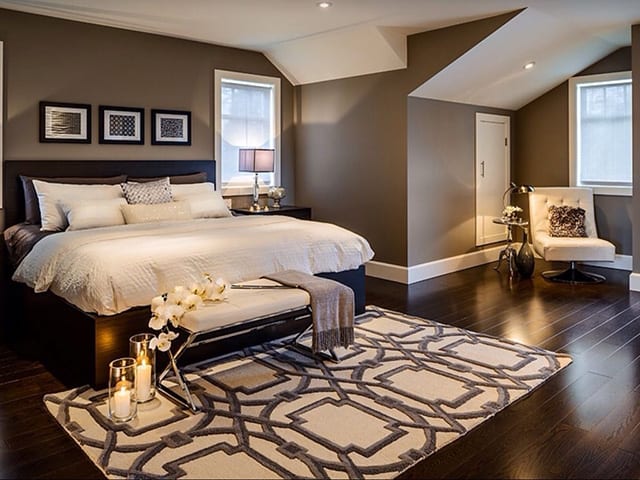Renovating your home doesn’t have to be an expensive endeavor. With careful planning, creativity, and a bit of DIY spirit, you can achieve remarkable transformations without breaking the bank. Whether you’re looking to update your kitchen, revamp your bathroom, or give your living room a fresh new look, there are plenty of cost-effective strategies to consider. In this blog post, we will explore a range of tips and tricks for renovating on a budget, allowing you to breathe new life into your home without draining your savings.
Set a Budget and Prioritize:
Before you dive into any home renovation project, it’s crucial to establish a realistic budget. Determine how much you’re willing to spend and allocate funds accordingly to different aspects of the renovation. Once you have a budget in place, prioritize the areas or rooms that need the most attention. Focus on essential improvements that will have the most significant impact on both aesthetics and functionality. This will help you make informed decisions and avoid overspending on unnecessary upgrades.
Plan and Research:
Proper planning and thorough research are essential for cost-effective renovations. Take the time to gather inspiration, browse online platforms, and visit home improvement stores to get an idea of the materials, fixtures, and finishes you’d like to incorporate. Compare prices, read reviews, and consider alternative options to find the best deals. Additionally, create a detailed renovation plan, including a timeline and a list of necessary supplies. This will help you stay organized, prevent costly mistakes, and ensure a smooth renovation process.
DIY or Hire Professionals:
One of the most effective ways to save money on renovations is by tackling some of the work yourself. DIY projects can range from painting walls and installing new fixtures to laying flooring and even building basic furniture. However, it’s crucial to assess your skill level and be realistic about what you can handle. Some tasks may require professional expertise, and attempting them yourself could lead to costly mistakes. Consider a combination of DIY and hiring professionals to strike a balance between cost savings and quality workmanship.
Optimize Existing Space:
If you’re working with a limited budget, consider optimizing your existing space instead of adding new square footage. Look for ways to maximize storage, improve organization, and create a more functional layout. This could involve decluttering, rearranging furniture, or installing shelving and cabinetry. Simple changes like these can have a significant impact on the functionality and overall feel of a space without the need for costly structural renovations.

Repurpose and Upcycle:
When renovating on a budget, think creatively and consider repurposing and upcycling items you already have. Look for opportunities to give old furniture a new lease on life with a fresh coat of paint or reupholstering. Repurpose materials from one area of your home for use in another. For example, salvaged wood from an old bookshelf could be transformed into floating shelves or decorative wall panels. By repurposing and upcycling, you can save money and add unique, personalized touches to your home.
Shop Smart:
Another key aspect of cost-effective home renovations is smart shopping. Take advantage of sales, discounts, and clearance offers when purchasing materials, appliances, and fixtures. Consider shopping at secondhand stores, flea markets, and online marketplaces for gently used items that can be refurbished or incorporated into your renovation. Additionally, consider buying in bulk for items like paint or flooring materials, as it can often result in significant savings.
Consider Energy Efficiency:
When renovating on a budget, it’s worth considering energy-efficient upgrades that can save you money in the long run. Look for opportunities to improve insulation, seal air leaks, and upgrade to energy-efficient appliances and fixtures. Simple changes like installing LED light bulbs or adding weatherstripping to windows and doors can help reduce energy consumption and lower utility bills. Additionally, consider incorporating natural light into your design by adding skylights or enlarging windows, reducing the need for artificial lighting during the day.
Embrace DIY Décor:
Home improvement isn’t just about structural changes; it’s also about enhancing the aesthetics of your space. Instead of splurging on expensive artwork or accessories, embrace DIY décor projects. Get creative with crafting and explore options like creating your own artwork, sewing your own curtains, or making personalized photo frames. Not only will this save you money, but it will also add a unique touch to your home that reflects your personal style and creativity.
Seek Inspiration from Nature:
Nature can be an excellent source of inspiration for cost-effective home improvements. Consider incorporating natural elements into your design, such as indoor plants, natural textiles, and organic materials. These elements not only add beauty and freshness to your home but also promote a sense of calm and well-being. You can also create your own natural décor by collecting branches, shells, or stones from outdoor excursions and using them as decorative accents in your space. Nature-inspired design is not only budget-friendly but also environmentally conscious, aligning with sustainable living principles.
In conclusion, renovating on a budget is entirely possible with careful planning, creativity, and strategic decision-making. By setting a budget, prioritizing, researching, and considering DIY options, you can transform your home without straining your finances. Remember to optimize existing space, repurpose and upcycle, and shop smart to make the most of your resources. With a bit of inspiration and a willingness to think outside the box, you can achieve cost-effective home improvements that enhance the functionality, aesthetics, and overall value of your living space. So, roll up your sleeves, get ready to DIY, and enjoy the rewarding journey of transforming your home on a budget with these tips from the Bible Keeper blog.
Renovating a budget requires careful planning, creativity, and a strategic approach to spending. By setting a budget, prioritizing key areas, planning and researching, considering DIY options, optimizing existing space, repurposing and upcycling, and shopping smart, you can achieve cost-effective home improvements that breathe new life into your living spaces. Remember, it’s not about how much money you spend, but how you utilize your resources and bring your vision to life. With these tips in mind, you’ll be well on your way to transforming your home without breaking the bank.









